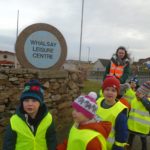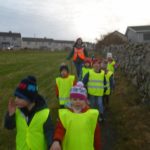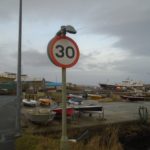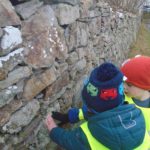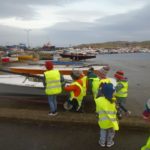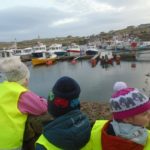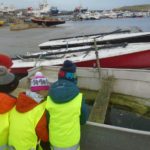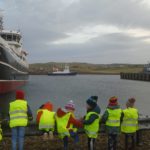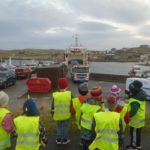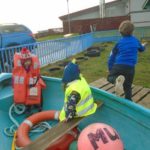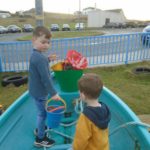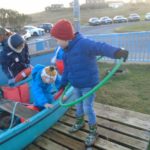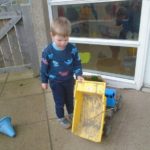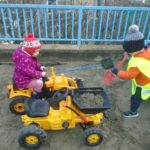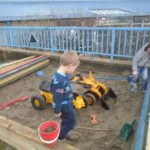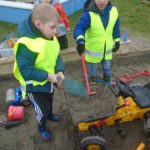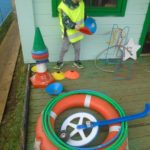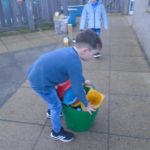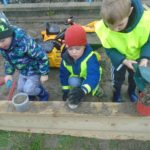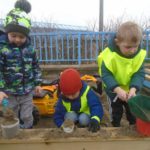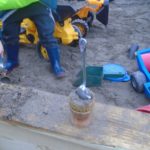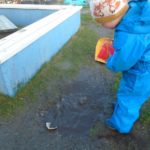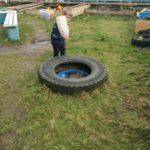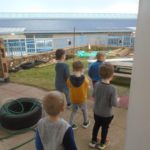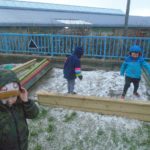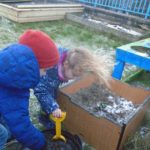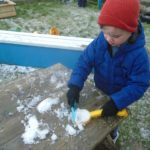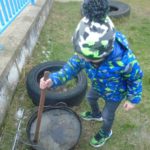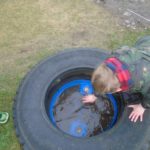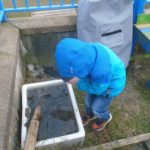This week we would like to share how and what we have been learning through our outdoor play.
On Tuesday a couple of us said “We would like to go to the pier for a walk!” The staff wondered if anyone else might like to join the walk, they asked what we might see on our way and what we would find at the pier. After asking our friends if they would like to join we had a total of eight willing explorers. There were many ideas of what we might see on our walk such as “massive boats, peerie boats, the marina, labsters, crabs, fish and the ferry.”
Our learning experiences are part of our environment. The local community and the outdoors are fantastic places for us to learn across the whole curriculum in meaningful, active and engaged ways. Finding enjoyment in walking and being outdoors in our early years helps to establish patterns of health and wellbeing which we can sustain into adult life.
Going for a walk requires us to use our listening skills and to develop our understanding of risks and road safety. Walking in our local community teaches us to assess and manage risks and develops our understanding of the impact of risk-taking behaviour. During the walk we stayed on the pavements, lined up and followed road crossing rules, kept hold of our partner’s hands and walked as part of our group following the couple in front.
During our walk we looked around us and spotted some important signs. We looked to see if there were any letters/numbers in the signs that we might recognise and learned what the signs said. Being able to recognise environmental print is one of the ways we develop knowledge of letters and words and learn to read.
As we stopped to look at signs we also noticed other interesting features around us. We learned about the “Auld man’s beard” lichen and talked about how it felt to touch, we heard different bird noises and talked about the animals we could see. We looked at lobster creels and noticed that they were empty, this led to a lot of discussion about how to catch lobsters, crabs and scallops. We shared our ideas with each other as we talked and listened. Being able to explain our thinking and learning new vocabulary in contexts that make sense to us is an important part of developing literacy skills for reading, writing, listening and talking.
As we got closer to the pier we looked at sailing boats, measured how many children long they were and noticed where the sails went. We were made aware of the very old pier that’s so old it’s crumbling into the sea. We spoke about “hundreds of years” and “the past”. The outdoors is a great place for us to develop numeracy skills and use natural events to explore measure, shape, size, time and number. Finding out about our history and heritage helps us to appreciate our local environment and develops our sense of belonging. We saw the cannon sticking up at the end of the old pier and imagined it came from a pirate ship! Using real life resources to stimulate story telling is an important part of early reading and writing. When we got to the Marina we noticed a lot of different colours of boats and that some boats had wheelhouses and some didn’t. We talked about our family members who had boats at the marina sharing our stories and news.
Eventually we made it to the big pier. “I see the Antaras!” We were excited to see the big fishing boat and to compare it’s size, shape and colour with the smaller boats we had seen on the way. As we spoke about the pelagic boats we saw the ferry arrive. “It’s the Fivla!” We went up the hill to see it come into the pier. We watched the ferry men attach the ferry to the pier and open the barrier. Learning about the jobs that people do in our community is important for our social understanding and our understanding of the world around us. We counted how many vehicles were on the ferry and were very excited when a big lorry beeped hello to us! There was 7 vehicles on the ferry, including cars, vans and a lorry.
Once we got back to nursery our play revealed just how inspired and engaged we had been on our walk. Our enthusiasm spread and friends who had chosen not to come on the walk found enjoyment in joining our play. We used the punt as a ferry and a variety of fishing boats throughout the week. Indoors we built boats using blocks and sorted small blocks into baskets of different types of fish such as haddocks, pilticks and mackerel. Our play extended into rescue missions using life-rafts, lifeboats and Oscar Charlie! Linking real life with our imaginary play helps us to process questions we might have and to explore our ideas, thoughts and feelings which are important Literacy and Health and Wellbeing skills.
Trucks featured heavily in our play too throughout the week. We boarded and alighted from our outdoor ferry with various loads. In the big sand pit we made cement together for “biggin’ hooses” and “fixing the roads.” When empty, these trucks often went on the ferry too. Our truck play relied on us to collaborate, co-operate and to take turns as well as develop our numeracy skills as we shared resources, compared load sizes, filled different sized shovels and buckets and discussed directions and position.
As our play progressed the truck became an “Essy Kert”. We worked together to collect “rubbish”, “bruck” and “litter”. We put it into the back of the essy kert so it could go to the dump. We made sure the essy kert had plenty of fuel for the journey too. Once we got to the dump our “sorting folk” categorised and sorted the bruck into piles. We created a pile of circles, a box of plastic, a pile of cones and a pile of wood. Collecting objects, matching, sorting and organising them and displaying our findings in different ways is an important aspect of developing understanding in numeracy.
The big sand pit and the mud kitchen and puddles have also been well used this week to create a wide variety of smoothies, soups, hot and cold drinks and interesting recipes as part of our play. Creating in this way develops our social skills, fine motor skills and scientific knowledge as we discuss, share ideas, use our fingers, hands and full bodies and explore different textures and how materials interact. It’s also a great space for us to develop our concepts of quantity, shape, number and measurement.
And of course the weather has been teaching us a lot this week too! There’s been rain, wind and hailey puckles to explore. The hail stones were very noisy as they hit the roof of the school. We rushed outside to see them land on the ground and watched the ground change colour. It was very exciting to watch the grass turn white. We discovered how cold the hail stones are when they roll down the back of our necks and how quickly they melt as they turn warm in our palms. Learning like this is a great way to develop knowledge about the weather, the properties of water and the affects of temperature. On Thursday we realised that ice had formed over puddles and water areas. We felt how smooth and cold it was and investigated how hard and thick different areas of ice were as we used implements to break through it and measured thickness using our fingers. Being outdoors helps us to understand changing seasons and develops our interest in the world around us.
Thank you to the outdoors for being such a wonderful and interesting classroom!


